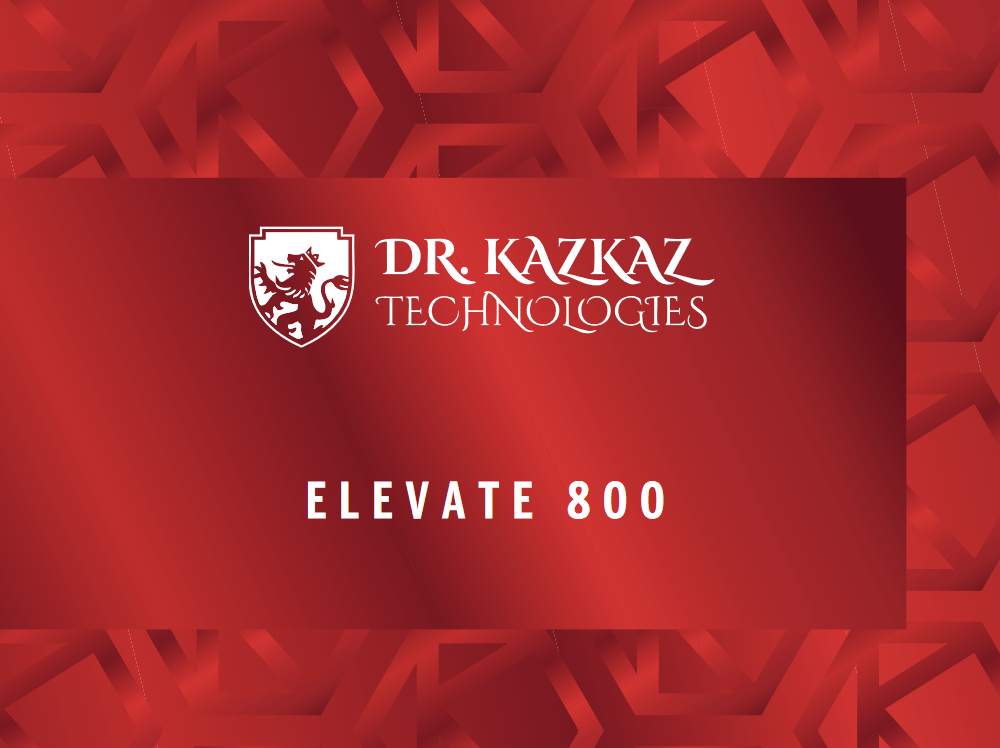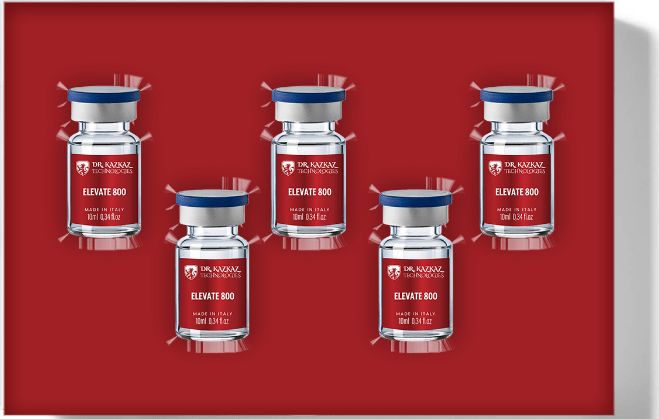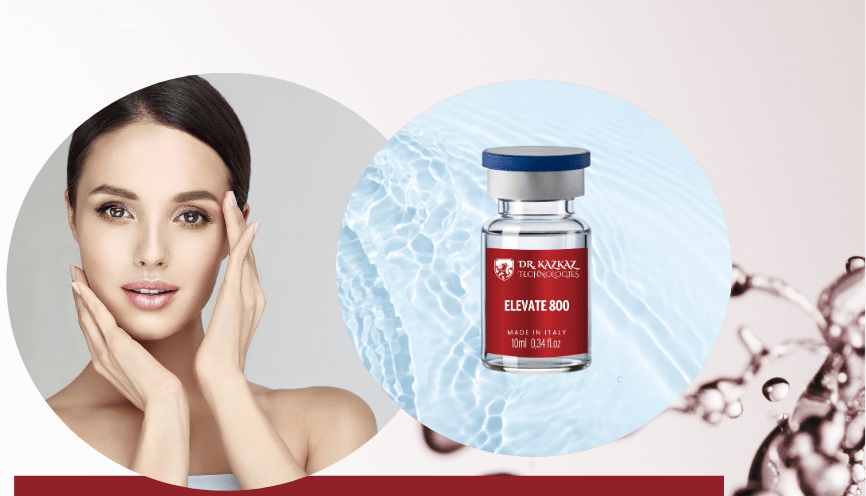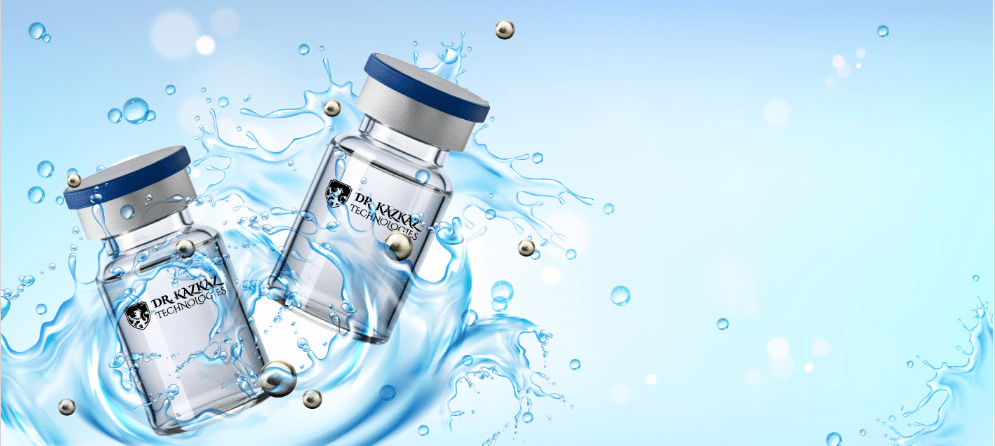Description
Importantly, the beneficial effects of ELEVATE become apparent progressively
over time, promoting long-lasting optimisation of the skin structure. This appro-
ach is designed to preserve the natural appearance of the skin, avoiding overly
artificial results and ensuring a harmonious transition to younger, healthier skin.
Safety and High Standards
Patient safety is a top priority in our formulations. The choice to use sterile me-
dical vials, produced according to strict pharmaceutical standards, is aimed
at guaranteeing a level of purity and quality without compromise, allowing pa-
tients to enjoy the benefits of treatment in a safe and controlled setting.
In addition, each stage of our production is subjected to scrupulous quality
controls, with constant monitoring of manufacturing conditions and raw mate-
rials used. This ensures that the final product is not only effective, but also highly
tolerated by the skin,
All our clinical treatments that is based on strong principles of safety and com-
pliance with health regulations, providing patients with an effective and reas-
suring skincare experience.
TREATMENT AREAS:
Temporal Zone
Orbicularis Area – Eye Contour
Cheeks
Deep nasolabial wrinkles
Puppet Wrinkles
Jaw Line
PRODUCED IN STERILE VIALS FOR MEDICAL USE. TOPICAL, MESOTHERAPEUTIC USE
ACTIVE INGREDIENT AND MODE OF ACTION
Polylactic Acid in Aesthetic Medicine: A Scientific Approach to Tissue Regeneration
Polylactic acid is a biodegradable and biocompatible polymer widely used in aesthe-
tic medicine for its biostimulating and bioregenerating properties. This compound is
derived from the polymerization of Lactic Acid, a natural metabolite, and its chemical
structure makes it an ideal candidate for medical, aesthetic and therapeutic applica-
tions.
The polymers of which it is composed act in synergy to stimulate the natural pro-
duction of collagen, promoting a constant and long-term improvement of the texture of
the tissues.
Mechanism of action
It acts primarily as a stimulator of collagen production in skin tissues in the deeper
layers of the skin. The polymer induces a controlled inflammatory response, which
activates fibroblasts, the cells responsible for collagen synthesis. This process promotes
tissue regeneration, and also helps to improve the elasticity and firmness of the skin,
making the face younger and more toned over time.
Benefits of Using Polylactic Acid
One of the main benefits of its use is its ability to provide a long-term effect as it sti-
mulates a change in cellular behavior, promoting the natural production of collagen.
This leads to a continuous improvement in skin tone and skin structure over the months,
necessitating fewer treatments than other options.
Safety
The use of polylactic acid is associated with a favorable safety profile. As a biodegra-
dable material, it is slowly reabsorbed by the body without leaving any toxic residue. Its
biocompatibility reduces the risk of adverse reactions and complications, making it a
safe option for many people.
Clinical Applications
In aesthetic medicine, polylactic acid is commonly used to treat problems related to
loss of volume and sagging skin, typical of the aging process. The most treated areas
of the face include the cheeks, nasolabial lines and chin area. In addition, it is also used
in neck and hand treatments.
In summary, polylactic acid represents an innovative and scientifically supported
solution for the aesthetic improvement of the face, combining the effectiveness of a
biostimulant with the safety of a biodegradable material. Thanks to its unique mecha-
nisms of action and bioregenerating effects, it offers an effective approach to aesthetic
medicine, stimulating long-term skin renewal and health.
CARBOXYMETHYLCELLULOSE
Polysaccharide, derived from cellulose, is valued not only for its hydration and viscosi-
ty capacity, but also for its biological potential, which is gaining increasing attention in
cosmetic research.
CMC’s properties are largely attributable to its ability to interact with skin cells. They
exert a fundamental action by stimulating the regeneration of fibroblasts, the key
cells in the biosynthesis of collagen and elastin. Collagen is known to give the skin its
structure and strength, while elastin is essential for its elasticity. As we age, the pro-
duction of these proteins decreases, leading to wrinkles and loss of firmness. The
implementation of CMC restores this balance, reactivating fibroblasts and promoting
healthy protein synthesis.
It has a significant effect on cellular metabolism, accelerating epidermal turnover pro-
cesses, stimulating the production of new cells, giving a smoother, brighter and more
homogeneous skin appearance. Scientific studies suggest that, thanks to these proper-
ties, CMC helps to improve the skin microenvironment, creating ideal conditions for skin
health.
The action of carboxymethylcellulose is not only limited to visible rejuvenation. It plays
an important role in strengthening the skin barrier, improving hydration and protecting
the skin from harmful environmental factors. it contributes to an increase in the overall
tone of the epidermis, promoting long-term skin well-being.
Carboxymethylcellulose emerges as a key ingredient due to its ability to stimulate fibro-
blasts, accelerate cell turnover and improve the skin barrier, it represents a valuable ally
to counteract the signs of aging and promote healthy, youthful and vibrant skin.
MANNITOL
Mannitol, an alditol known for its pharmacological peculiarities and therapeutic versati-
lity, is emerging as a new tool in aesthetic medicine, in particular as a biostimulant and
bioregenerator of facial tissues. This polysaccharide is showing potential in the field of
skin regeneration and rejuvenation.
Mechanism of action
Mannitol acts primarily via osmotic and antioxidant mechanisms. Its ability to attract
water and maintain skin hydration is essential in the treatment of tissues that show
signs of aging, dehydration and loss of tone. The application of mannitol improves the
distribution of fluids in the dermis, promoting an environment conducive to cell regene-
ration.
Thanks to its antioxidant activity, capable of neutralizing free radicals that contribute
to skin aging, and reducing oxidative stress, it promotes the synthesis of collagen and
elastin, biomolecules essential for the structure and elasticity of the skin. This process
improves the immediate aesthetic appearance, offers long-term benefits, slowing down
the skin’s natural aging process.
Clinical Applications
In clinical practice, the integration of mannitol with biostimulation treatments amplifies
the results, acting as a vehicle and adjuvant to other active ingredients present in the
formula, and improving the absorption of the active ingredients and the general effecti-
veness of the treatment.
The integration of mannitol into aesthetic medicine practices represents a significant
step forward towards facial treatment, combining aesthetic benefit with profound thera-
peutic action.
The box contains 2 vials of 10 ml with powder to be reconstituted.
The vial must be reconstituted with 10 ml of water for injections.
POSOLOGY: ONE (1) APPLICATION EVERY 18 – 24 Mounths (Depends on the patient’s con-
dition)








